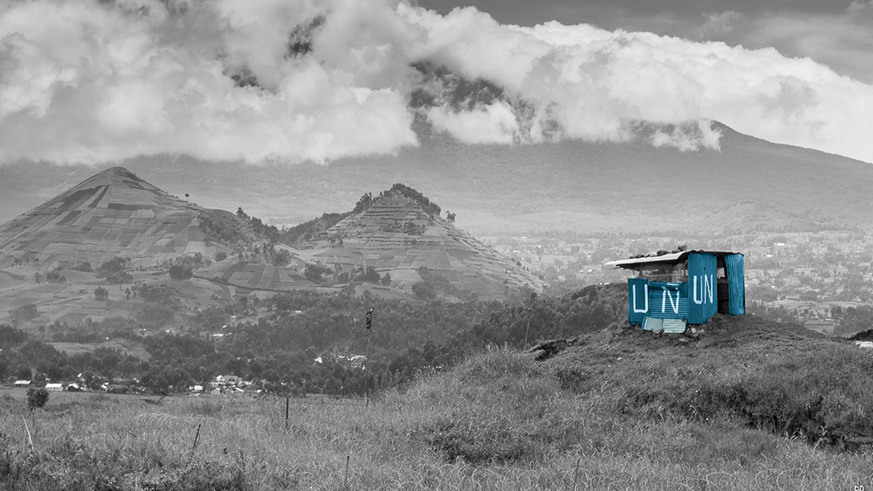

At the base of Rwanda’s border ‘horn’ that projects into D.R. Congo’s eastern border convergence with Uganda’s south-western border, at the foot of Mt Muhabura, there snuggles umudugudu (a village) that goes by the imposing name of Amajambere.
That name has a long story that begins with the construction of a stone house in 1953.
Amajambere is the area’s Kinyarwanda-variant’s word for ‘progress’. That’s why the only stone house in the area, for representing a future beyond the villagers’ lifetime, was named so.
It belonged to the area’s sub-chief, loved because he welcomed all to his home. So much so that the house’s spacious sitting room used to function as everybody’s cinema hall for the mobile film show that regularly did the rounds of Rwanda.
Unfortunately, the 1959 upheavals that convulsed the country into bloodshed, arson and banishments, targeting a section of Rwandans, happened.
And saw to its summary destruction. Stone, dried-earth tile, any cement floor piece, all were turned into rubble. And the rubble cast away to clear the land for tilling.
No villager could be allowed to ‘inherit’ the house. Not even the subsequent sub-chief. Nor could it be allowed that it be put to good use, say, as a social hall.
The leaders in whose name those upheavals were carried out – by their colonial masters! – could not think of preserving that little ‘progress’ for themselves. Being consumed by hatred of their own people, they were totally bent on the will to destroy.
All that was shared by their kinsmen/women had to be obliterated.
Granted, bankrupt leaderships exist in many places. But Rwanda’s was in a class of its own!
So, when I returned from exile and later (1996) visited that home area to revive my memories, I was surprised that the villagers had adopted the name of the stone house, forgetting that the leaders wished its memory erased. Interestingly, the leaders were none the wiser!
The villagers were still celebrating the little ‘majambere’ they’d known.
And with reason.
The country over, villagers in rags could hardly eke out a living. Gone was "Régie des eaux”, the network of clean piped water that reached almost every village. The small Ntaruka Hydropower Station that gave electricity to Kigali, even sparing some for export to Gisoro town, Uganda, was hardly serviceable.
Formally reasonably effective Ruhengeri Dispensary, 29 km away, was limping. The makeshift nursery school that I remembered fondly was the now-respected primary school, complete with the stone I used to sit on! Never mind that bushy grass threatened to swallow it up.
Still, these people and other border communities were at least er…not better but….less badly off than other communities.
Only by seeing its scattering of semblances of hotels could you tell that Kigali was the capital city. Its heavyweight leaders in politics and business, singly fattened on European hand-outs, prided themselves on living in ‘rukarakara’ (mud-and-iron-sheet) ‘residences’!
So heart-wrenching was the state of this one-time honoured community.
A once proud people who had surprised European explorers by their advanced administrative order and level of relative progress had been reduced to beggarly walking zombies. Wherever you passed, if you looked clean and healthy, they stretched out hands mumbling a weak "Wamfunguriye!” (Please spare me a morsel).
Surely, what had these brutish leaders done to our people?
Perhaps one incident explains the state of Rwandans most succinctly.
In 1992 an observer group deployed by the Organisation of African Unity was in Rwanda. The Neutral Military Observer Group (NMOG) was to see to the enforcement of peace talks between the government and the RPF/A. These NMOG soldiers drawn from African countries included some from the government as well as RPA fighters.
The story then goes that when an RPA member visited the Rwandan central bank, word got around and all employees rushed to their windows to see how long his rabbit ears and monkey tail were. Among those with eyes peeled on their windows, the bank’s governor, no less!
Government propaganda had blinded everybody so much that they could not remember that those it called "cockroaches”, "snakes”, "rabbits”, "monkeys”, etc., were their own people.
What’s worse, some foreigners in the West had also swallowed that propaganda hook, line and sinker.
Which explains why there was no international community intervention in the Genocide against the Tutsi. Why they rubbished Gacaca, Umuganda, Ndumunyarwanda, Bye-bye-nyakatsi, the lot, before these innovative ingenuities surprised them all with sterling results.
And, apparently, they’ll never reconcile with this reality: whatever initiative Rwanda takes today, she has considered it so thoroughly that it’s unlikely to go wrong. Some programmes have gone awry, all right, mais ça c’est la vie.
Otherwise, so is it with advertising with Arsenal FC.
Such bolts of surprises may never cease. An apparently primitive African warrior group, dressed for it, too, bursting onto Western land and surprising with never-before-witnessed elegance, grace and choreographic sophistication. You can’t but give them standing plaudits!
Love her or hate her, Rwanda will pull you to herself.
The negative Western media may shout themselves hoarse about the lie of misused dole-outs but they’ll change zippo.
From 1994, Rwanda’s committed long-term campaign has been Bye-bye-for-ever-Zombie-land!
butapa@gmail.com
The views expressed in this article are of the author.


